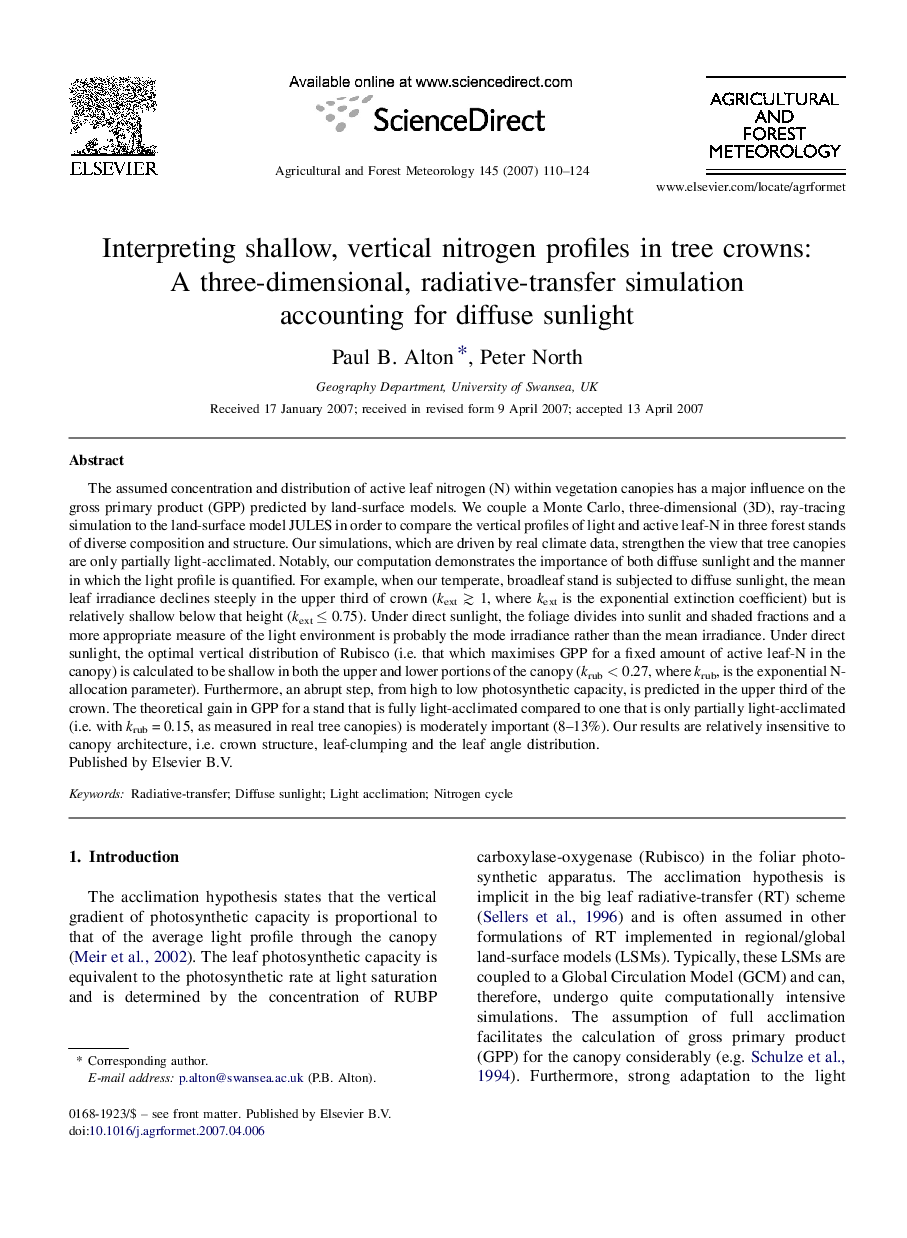| کد مقاله | کد نشریه | سال انتشار | مقاله انگلیسی | نسخه تمام متن |
|---|---|---|---|---|
| 82960 | 158433 | 2007 | 15 صفحه PDF | دانلود رایگان |

The assumed concentration and distribution of active leaf nitrogen (N) within vegetation canopies has a major influence on the gross primary product (GPP) predicted by land-surface models. We couple a Monte Carlo, three-dimensional (3D), ray-tracing simulation to the land-surface model JULES in order to compare the vertical profiles of light and active leaf-N in three forest stands of diverse composition and structure. Our simulations, which are driven by real climate data, strengthen the view that tree canopies are only partially light-acclimated. Notably, our computation demonstrates the importance of both diffuse sunlight and the manner in which the light profile is quantified. For example, when our temperate, broadleaf stand is subjected to diffuse sunlight, the mean leaf irradiance declines steeply in the upper third of crown (kext ≳ 1, where kext is the exponential extinction coefficient) but is relatively shallow below that height (kext ≤ 0.75). Under direct sunlight, the foliage divides into sunlit and shaded fractions and a more appropriate measure of the light environment is probably the mode irradiance rather than the mean irradiance. Under direct sunlight, the optimal vertical distribution of Rubisco (i.e. that which maximises GPP for a fixed amount of active leaf-N in the canopy) is calculated to be shallow in both the upper and lower portions of the canopy (krub < 0.27, where krub, is the exponential N-allocation parameter). Furthermore, an abrupt step, from high to low photosynthetic capacity, is predicted in the upper third of the crown. The theoretical gain in GPP for a stand that is fully light-acclimated compared to one that is only partially light-acclimated (i.e. with krub = 0.15, as measured in real tree canopies) is moderately important (8–13%). Our results are relatively insensitive to canopy architecture, i.e. crown structure, leaf-clumping and the leaf angle distribution.
Journal: Agricultural and Forest Meteorology - Volume 145, Issues 1–2, 9 July 2007, Pages 110–124